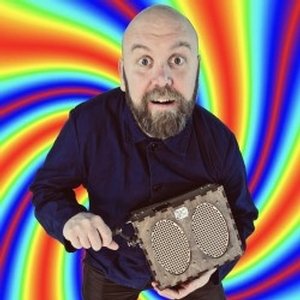Whilst some comedians thrive on having a structure to their show – a beginning, middle and end that contain recurring themes and running gags, Bob Slayer is the exact opposite. His freewheeling hour involves much in the way of impromptu events.
These involve in depth audience interactions that work especially well in an audience containing other Fringe acts and one particularly drunk punter, spur-of-the-moment performances from said other Fringe acts as well as others who drop in during the hour, and the occasional tune from Bob’s hipsterish portable hand-cranked music box.
Slayer’s laid back attitude adds to the loose, relaxed feel of the evening, making the audience feel as if they were at home, rather than in an impressively-constructed yurt next to an underpass. This approach further benefits Slayer by allowing him to effortlessly switch gears – for example, from telling a detailed anecdote involving Arthur Smith and too many Jagerbombs to getting the audience to dance to the beat of said drunk audience member – that keeps the audience engaged and wanting more.
Lesser comedians would struggle to maintain this form of managed chaos whilst also keeping the audience laughing, but an experienced hand like Slayer has no problems in doing so. The (extremely) loose structure of the show also enables him to turn potential obstacles such as drunk hecklers into opportunities for him to gain more laughs without disrupting the flow of the evening.
Slayer’s entertaining and unpredictable hour of comedy keeps the audience laughing and on their toes. It’s a fine example of how you don’t necessarily need a structure or a recurring theme to create a successful comedy show at the Fringe. Instead, Slayer uses everything available to him to create a funny and relaxed atmosphere that makes you want to come back for more.
